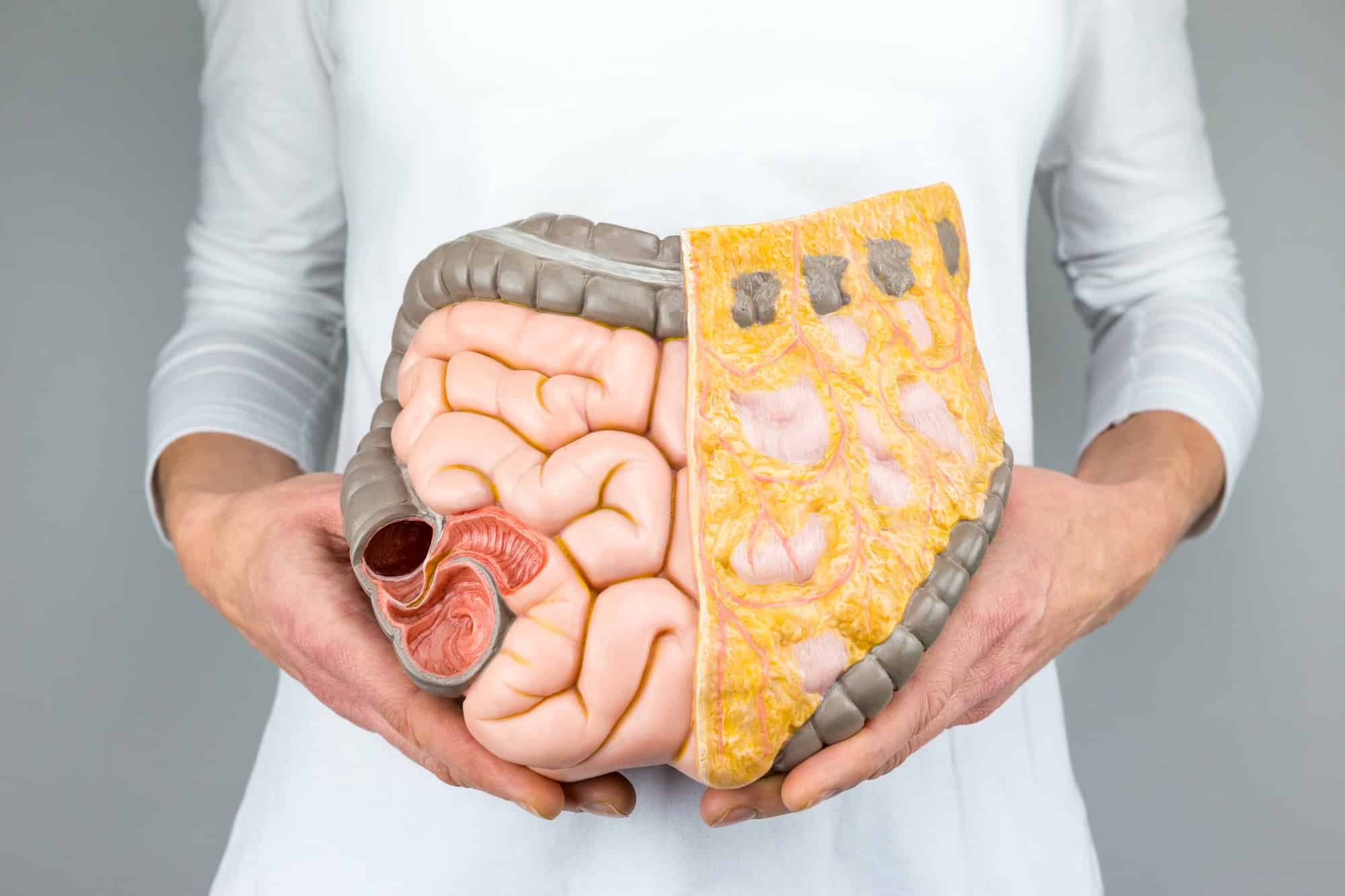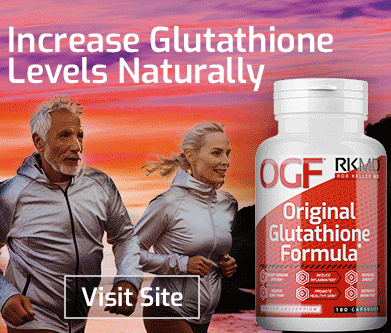Spice up your life! How adding herbs & spices enhances your meals and well-being
Herbs and spices are typically used to add flavor and keep a meal interesting, so we don’t usually consider their benefits beyond what they offer our taste buds. However, emerging evidence on herbs and spices shows that they can provide more than additional flavor, so you shouldn’t be afraid of using a little extra when cooking to further boost the health benefits of your meal.
Let’s investigate some of the herbs and spices that possess anti-inflammatory, antioxidant, anti-carcinogenic, and antitumorigenic properties, in addition to seasonings that can regulate glucose and cholesterol or improve cognition and mood.
Herbs vs. Spices
This guide will first list the herbs that can offer health benefits before moving on to spices. For those wondering about the difference between herbs and spices, both come from a plant, but an herb is the green, leafy part of a plant, while a spice comes from the stalk, seed, fruit, or root, which is most often dried.
Since spices come from crushed portions of the plant rich in essential oils, they are often more potent than herbs, so you typically use less to flavor your food.
Health Benefits of Common Herbs
Bay Leaves
Preliminary studies on bay leaves have found that they have the potential to protect against certain strains of cancer.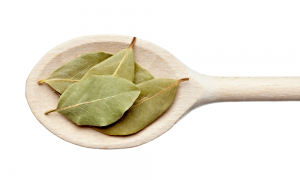
One study found that bay leaves exhibited bioactivity that protected against early events in those with sporadic colorectal cancer, and another study on colorectal cancer found that bay leaves could hinder the growth of cancer cells.
These anti-carcinogenic benefits offered by bay leaves have also been seen in studies regarding breast cancer.
Beyond protecting against and fighting cancer, a study on bay leaves also showed that they can help lower and manage cholesterol and glucose levels in those with diabetes. These abilities can help regulate or even prevent cardiovascular diseases and diabetes.
Parsley
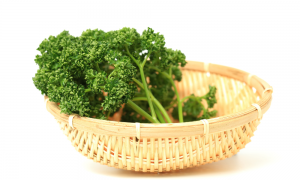 Parsley is rich in many antioxidants, including carotenoids, flavonoids, and vitamin C. Flavonoids, in particular, can help reduce the risk of health conditions such as heart disease, type 2 diabetes, and colon cancer.
Parsley is rich in many antioxidants, including carotenoids, flavonoids, and vitamin C. Flavonoids, in particular, can help reduce the risk of health conditions such as heart disease, type 2 diabetes, and colon cancer.
Antioxidants have been shown to combat oxidative stress, which contributes to the development of diseases such as cancer. Since parsley is rich in antioxidants, it may also offer this protection against oxidative stress.
Studies have also shown that the antioxidant content of dried parsley may be higher than when it is in its fresh form by up to 17 times.
Rosemary
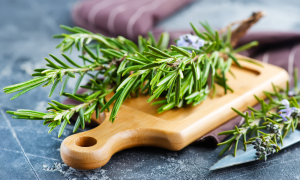 Rosemary possesses substantial benefits for the brain due to its compound called carnosic acid, which has the ability to fight damage from free radicals in the brain. Research into the protective properties of rosemary shows that it may be able to protect against brain damage and improve recovery in those who have had a stroke.
Rosemary possesses substantial benefits for the brain due to its compound called carnosic acid, which has the ability to fight damage from free radicals in the brain. Research into the protective properties of rosemary shows that it may be able to protect against brain damage and improve recovery in those who have had a stroke.
The aroma given off by rosemary also offers benefits for the brain, with research showing that rosemary’s aroma can improve your performance, concentration, accuracy, speed, and in some individuals, mood.
Other studies have suggested that using rosemary can help prevent the signs of aging in the brain, which may show promise in preventing certain brain disorders, such as Alzheimer’s.
Health Benefits of Common Spices
Cinnamon
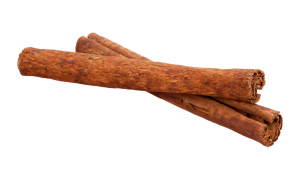 More than being a quintessential spice for many desserts, cinnamon is rich in many beneficial compounds, offering it a range of health benefits.
More than being a quintessential spice for many desserts, cinnamon is rich in many beneficial compounds, offering it a range of health benefits.
Cinnamon is full of antioxidants, especially polyphenols, and one study found that in addition to increasing antioxidant levels in the blood, cinnamon also reduces the levels of inflammatory markers such as C-reactive protein.
Cinnamon also helps to promote heart health through its ability to reduce levels of total cholesterol, LDL (bad) cholesterol, triglycerides, and blood sugar.
Studies have also shown the ability of cinnamon to reduce blood pressure when consumed consistently for 8 weeks. With high blood pressure being a silent contributor to heart disease, these benefits allow cinnamon to further protect heart health.
Cinnamon can also help protect against neurodegenerative diseases. One example is its ability to inhibit the buildup of tau, a protein found in the brain that is a hallmark of Alzheimer’s disease.
Yet another study found that cinnamon was able to normalize neurotransmitter levels, protect neurons, and improve motor function in mice with Parkinson’s disease, further demonstrating its neuroprotective properties.
Ginger
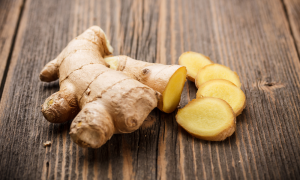 Ginger contains the bioactive compound gingerol, which possesses potent antioxidant and anti-inflammatory effects.
Ginger contains the bioactive compound gingerol, which possesses potent antioxidant and anti-inflammatory effects.
Ginger has also been shown to dramatically reduce blood sugar in those with type 2 diabetes, with a 2015 study reporting that participants who ingested 2 grams of ginger powder each day saw a decrease in fasting blood sugar by 12%.
Cloves
Cloves are known as a sweet and aromatic spice, yet they also offer many health benefits.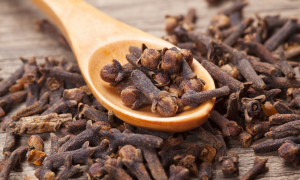
One benefit of clove is its ability to potentially protect against cancer. A test-tube study found that the use of clove extract was able to promote cell death in cancer cells and halt the growth of tumors.
Yet another test-tube study showed that clove oil caused cell death in 80% of esophageal cancer cells.
Clove may also exhibit anti-bacterial properties, with one study showing the ability of clove to kill three common types of bacteria, including E. coli, which commonly causes food poisoning or UTIs.
Clove can also promote liver health, with an animal study involving rats with fatty liver disease showing that clove improved liver function, decreased oxidative stress, and reduced inflammation.
Using Herbs and Spices to Improve Your Health
Herbs and spices bring the most beneficial compounds offered by plants to your food. With the ability to prevent cancer, fight bacteria, and improve heart health, herbs and spices offer many benefits to your health while also adding flavor to your food.
It is important to remember, though, that many studies involving herbs and spices used an amount that is likely more than you would ingest from a meal. However, that does not mean that these same benefits will not be experienced; it might just be to a lesser extent.
No matter how much you use, adding herbs and spices to your meals, especially consistently, can help you preserve your health while appeasing your tastebuds, so don’t be afraid to add a little extra herb and spice while cooking.
References
Bennett, L., Abeywardena, M., Burnard, S., Forsyth, S., Head, R., King, K., Patten, G., Watkins, P., Williams, R., Zabaras, D., & Lockett, T. (2013). Molecular size fractions of bay leaf (Laurus nobilis) exhibit differentiated regulation of colorectal cancer cell growth in vitro. Nutrition and cancer, 65(5), 746–764. https://doi.org/10.1080/01635581.2013.796999
Jaksevicius, A., Carew, M., Mistry, C., Modjtahedi, H., & Opara, E. I. (2017). Inhibitory Effects of Culinary Herbs and Spices on the Growth of HCA-7 Colorectal Cancer Cells and Their COX-2 Expression. Nutrients, 9(10), 1051. https://doi.org/10.3390/nu9101051
Kasabri, Violet & Abu-Dahab, Rana & Afifi, Fatma. (2013). ”Evaluation of the volatile oil composition and antiproliferative activity of Laurus nobilis L. (Lauraceae) on breast cancer cell line models”. Records of Natural Products.
Khan, A., Zaman, G., & Anderson, R. (2009). Bay Leaves Improve Glucose and Lipid Profile of People with Type 2 Diabetes. Journal Of Clinical Biochemistry And Nutrition, 44(1), 52-56. doi: 10.3164/jcbn.08-188
Wang, X., Ouyang, Y. Y., Liu, J., & Zhao, G. (2014). Flavonoid intake and risk of CVD: a systematic review and meta-analysis of prospective cohort studies. The British journal of nutrition, 111(1), 1–11. https://doi.org/10.1017/S000711451300278X
Liu, Y. J., Zhan, J., Liu, X. L., Wang, Y., Ji, J., & He, Q. Q. (2014). Dietary flavonoids intake and risk of type 2 diabetes: a meta-analysis of prospective cohort studies. Clinical nutrition (Edinburgh, Scotland), 33(1), 59–63. https://doi.org/10.1016/j.clnu.2013.03.011
Chang, H., Lei, L., Zhou, Y., Ye, F., & Zhao, G. (2018). Dietary Flavonoids and the Risk of Colorectal Cancer: An Updated Meta-Analysis of Epidemiological Studies. Nutrients, 10(7), 950. https://doi.org/10.3390/nu10070950
Opara, E. I., & Chohan, M. (2014). Culinary herbs and spices: their bioactive properties, the contribution of polyphenols and the challenges in deducing their true health benefits. International journal of molecular sciences, 15(10), 19183–19202. https://doi.org/10.3390/ijms151019183
Seyedemadi, P., Rahnema, M., Bigdeli, M. R., Oryan, S., & Rafati, H. (2016). The Neuroprotective Effect of Rosemary (Rosmarinus officinalis L.) Hydro-alcoholic Extract on Cerebral Ischemic Tolerance in Experimental Stroke. Iranian journal of pharmaceutical research : IJPR, 15(4), 875–883.
Moss, M., & Oliver, L. (2012). Plasma 1,8-cineole correlates with cognitive performance following exposure to rosemary essential oil aroma. Therapeutic Advances In Psychopharmacology, 2(3), 103-113. doi: 10.1177/2045125312436573
Hügel H. M. (2015). Brain Food for Alzheimer-Free Ageing: Focus on Herbal Medicines. Advances in experimental medicine and biology, 863, 95–116. https://doi.org/10.1007/978-3-319-18365-7_5
Kawatra, P., & Rajagopalan, R. (2015). Cinnamon: Mystic powers of a minute ingredient. Pharmacognosy Research, 7(5), 1. doi: 10.4103/0974-8490.157990
Zhu, C., Yan, H., Zheng, Y., Santos, H. O., Macit, M. S., & Zhao, K. (2020). Impact of Cinnamon Supplementation on cardiometabolic Biomarkers of Inflammation and Oxidative Stress: A Systematic Review and Meta-Analysis of Randomized Controlled Trials. Complementary therapies in medicine, 53, 102517. https://doi.org/10.1016/j.ctim.2020.102517
Kutbi, E. H., Sohouli, M. H., Fatahi, S., Lari, A., Shidfar, F., Aljhdali, M. M., Alhoshan, F. M., Elahi, S. S., Almusa, H. A., & Abu-Zaid, A. (2022). The beneficial effects of cinnamon among patients with metabolic diseases: A systematic review and dose-response meta-analysis of randomized-controlled trials. Critical reviews in food science and nutrition, 62(22), 6113–6131. https://doi.org/10.1080/10408398.2021.1896473
Hadi, A., Campbell, M. S., Hassani, B., Pourmasoumi, M., Salehi-Sahlabadi, A., & Hosseini, S. A. (2020). The effect of cinnamon supplementation on blood pressure in adults: A systematic review and meta-analysis of randomized controlled trials. Clinical nutrition ESPEN, 36, 10–16. https://doi.org/10.1016/j.clnesp.2020.01.002
Momtaz, S., Hassani, S., Khan, F., Ziaee, M., & Abdollahi, M. (2018). Cinnamon, a promising prospect towards Alzheimer’s disease. Pharmacological research, 130, 241–258. https://doi.org/10.1016/j.phrs.2017.12.011
Khasnavis, S., & Pahan, K. (2014). Cinnamon treatment upregulates neuroprotective proteins Parkin and DJ-1 and protects dopaminergic neurons in a mouse model of Parkinson’s disease. Journal of neuroimmune pharmacology : the official journal of the Society on NeuroImmune Pharmacology, 9(4), 569–581. https://doi.org/10.1007/s11481-014-9552-2
Mashhadi, N. S., Ghiasvand, R., Askari, G., Hariri, M., Darvishi, L., & Mofid, M. R. (2013). Anti-oxidative and anti-inflammatory effects of ginger in health and physical activity: review of current evidence. International journal of preventive medicine, 4(Suppl 1), S36–S42.
Khandouzi, N., Shidfar, F., Rajab, A., Rahideh, T., Hosseini, P., & Mir Taheri, M. (2015). The effects of ginger on fasting blood sugar, hemoglobin a1c, apolipoprotein B, apolipoprotein a-I and malondialdehyde in type 2 diabetic patients. Iranian journal of pharmaceutical research : IJPR, 14(1), 131–140.
Liu, H., Schmitz, J., Wei, J., Cao, S., Beumer, J., & Strychor, S. et al. (2014). Clove Extract Inhibits Tumor Growth and Promotes Cell Cycle Arrest and Apoptosis. Oncology Research Featuring Preclinical And Clinical Cancer Therapeutics, 21(5), 247-259. doi: 10.3727/096504014×13946388748910
Dwivedi, V., Shrivastava, R., Hussain, S., Ganguly, C., & Bharadwaj, M. (2011). Comparative anticancer potential of clove (Syzygium aromaticum)–an Indian spice–against cancer cell lines of various anatomical origin. Asian Pacific journal of cancer prevention : APJCP, 12(8), 1989–1993.
Nuñez, L., & D’ Aquino, M. (2012). Microbicide activity of clove essential oil (Eugenia caryophyllata). Brazilian Journal Of Microbiology, 43(4), 1255-1260. doi: 10.1590/s1517-83822012000400003
Al-Okbi, S. Y., Mohamed, D. A., Hamed, T. E., & Edris, A. E. (2014). Protective effect of clove oil and eugenol microemulsions on fatty liver and dyslipidemia as components of metabolic syndrome. Journal of medicinal food, 17(7), 764–771. https://doi.org/10.1089/jmf.2013.0033













